Hose Pipe Bans - How to be Prepared
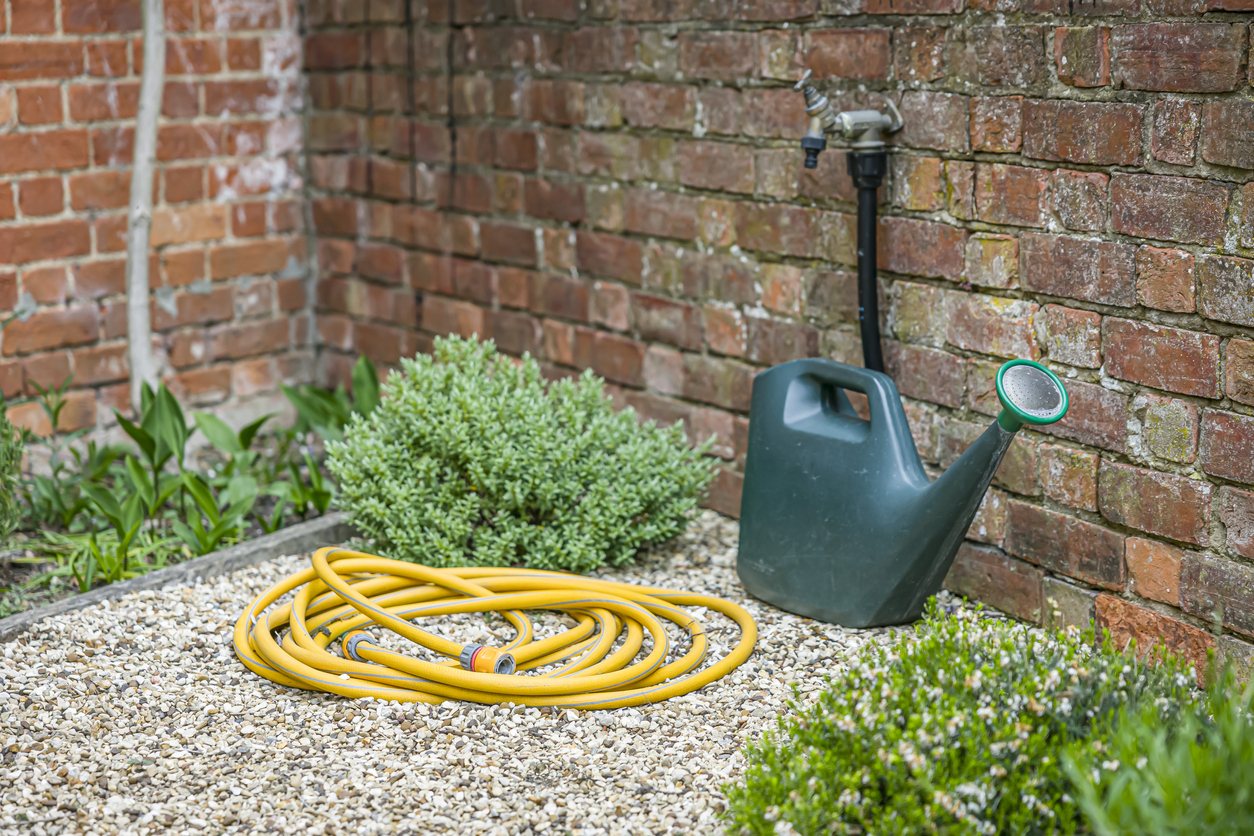
As temperatures are climbing year-on-year due to climate change, we are seeing longer periods without rain across the UK, making it harder for water companies to replenish reservoirs, resulting in our gardens being the hardest hit by these hose pipe bans. An example of this is with South West Water extending their hose pipe ban or Temporary Use Ban (TUB) for parts of Devon and Cornwall since the summer of 2022 until the 25th September 2023.
According to Tameside, 'The average hosepipe uses 170 litres of water for every 10 minutes that it is turned on. That’s almost 19 flushes of a toilet in just 10 minutes. In one hour, a hosepipe will use the same amount of water as a whole family would use in 2 days'. This is a phenomenal amount of water.
What are the normal rules for a hosepipe ban?
You cannot use a hosepipe to do certain tasks, such as:
- Watering your garden lawn or plants
- Using a paddling pool
- Car cleaning
- Cleaning walls or windows
There are some exceptions, including:
- Watering a new lawn within 28 days of it being put down
- To fill a fountain used for religious practices
- For businesses
- To fill pools needed for medical treatment
- If you have a fish pond that requires topping up
If you are caught breaking the rules, you may be fined up to £1,000.
Below are a few tips which could help with conserving water and water usage before a ban comes in place.
1. Follow the Guidelines
Keep yourself updated on the specific restrictions implemented during the hosepipe ban. Check the website of your water supplier or listen to local news for the latest information.
2. Conserve Water
Adopt water-saving habits to reduce consumption. Use a watering can instead of a hosepipe to water plants, and avoid using large amounts of water for non-essential tasks such as washing cars or filling swimming pools.
According to the RHS (Royal Horticultural Society) 'Plants can only effectively use water through their roots, taking water from the surrounding soil or compost. So water needs to get to where it’s needed, at the tip of the roots and not the leaves.' This can easily be achieved by a water can, by directing the water at the roots of the plants.
3. Install Water-saving devices
Fit taps and shower heads with aerators or flow restrictors to limit the water usage. These devices can help reduce water flow without sacrificing performance.
4. Collect Rainwater
Invest in a water butt or rainwater storage tank to collect rainwater for watering plants and gardens. This can provide an alternative water source during the hosepipe ban.
Water tanks
Water tanks provide an option to keeping things like gardening and car cleaning going during a hosepipe ban.
Regularly topping up throughout the year through rainfall off a roof, you’ll be able to utilise the water collected during a hosepipe ban.
There are plenty of options when it comes to purchasing a water tank as well. You can select a water tank that is best for your needs and suitable given the space you’ve got available.
Water Butts
Also known as a rain barrel, a water butt is a container designed to collect and store rainwater. Typically placed under a down spout or connected to a gutter system to capture rainwater run-off from the roof of a building.
A water butt could save you 1,000 litres of water every year (dependent on the size of your water storage container). They also minimise the amount of rainwater entering our sewers, which can help prevent water companies flooding sewers into our streams and seas.
As rainwater is naturally soft and chemical-free, it is great for watering plants, promoting healthy plant growth and reducing the need for treated tap water. Rainwater from a water butt can also be used to for washing cars, or cleaning outdoor spaces to name but a few.
Water butts come with a tap or outlet, making it easy to decanter the water from the storage tanks for use within the garden or surrounding area.
Above Ground Rainwater Harvesting Tanks
As the water butt, this container is designed to collect and store rainwater above the ground. Also known as a rainwater storage tanks, these tanks are ideal if you have limited space or do not have the option to install an underground rainwater harvesting system. They can be placed in a convenient location, with minimal construction work, and is easy to install.
Offering flexibility in terms of size and design. They come in various capacities, allowing you to choose a tank size that suits your water storage needs. Additionally, you can easily add or remove tanks as per your requirements. With their easy access, you can monitor the water level, clean the tank, and perform maintenance tasks with ease.
Collected rainwater from above ground rainwater tanks can be used for various purposes such as watering plants, washing cars, or even for non-potable (not for human consumption) uses within your household.
Remember to check local regulations and guidelines regarding rainwater harvesting and storage in your area.
Below Ground Rainwater Harvesting Tanks
An underground rainwater harvesting tank, as the name suggests, is a tank which is buried underground to collect and store rainwater. Ideal if you have limited space above ground, so you can maximise the use of your property without sacrificing valuable surface area.
Below ground rainwater harvesting tanks, tend to be larger tanks, which take up quite a bit of room, also they can look a bit daunting, so by burying them underground, you can keep your garden or landscape free from any above-ground structures, preserving the aesthetics of your property.
Within some areas, there may be regulations or restrictions on above-ground structures, so the below ground tanks offer a viable alternative that complies with the rules.
Being underground, the tanks are less exposed to sunlight, reducing the growth of algae and other microorganisms, that can affect the water quality. Additionally, being shielded from external elements like debris or contaminants, underground tanks offer better protection against potential water pollution, ensuring cleaner and safer water for various uses.
As per the above ground rainwater storage tanks, remember to consult with professionals and adhere to local regulations and guidelines regarding the installation of underground rainwater harvesting tanks.
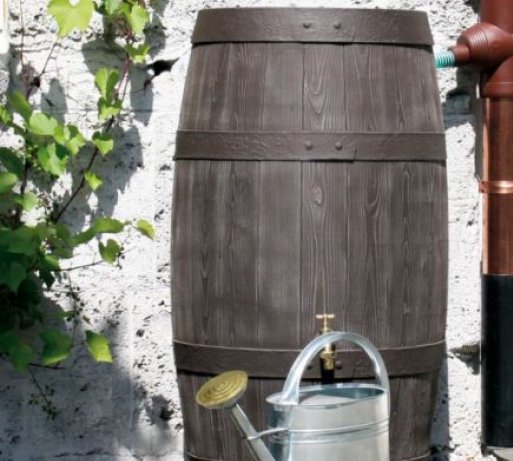 Water Butts
Water Butts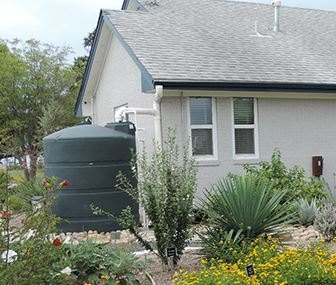 Above Ground Rainwater Harvesting Tanks
Above Ground Rainwater Harvesting Tanks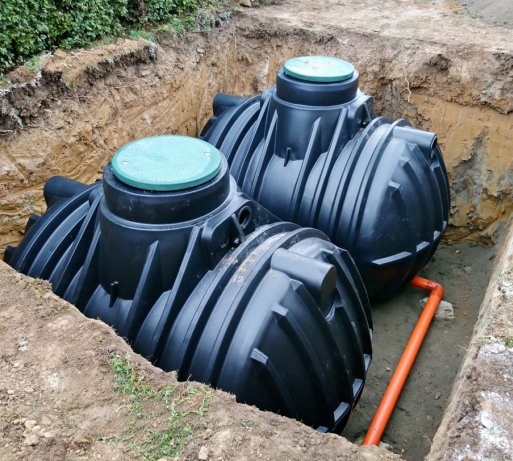 Below Ground Rainwater Harvesting Tanks
Below Ground Rainwater Harvesting Tanks5. Prioritise Water Usage
Focus on essential tasks that require water, such as cooking and personal hygiene. Limit non-essential activities, such as cleaning or washing clothes, to conserve water.
Remember, the hosepipe ban is in place to ensure the equitable and efficient use of water in times of drought or scarcity.
By being prepared and making water-saving adjustments, you can contribute to preserving this vital resource during the ban period.
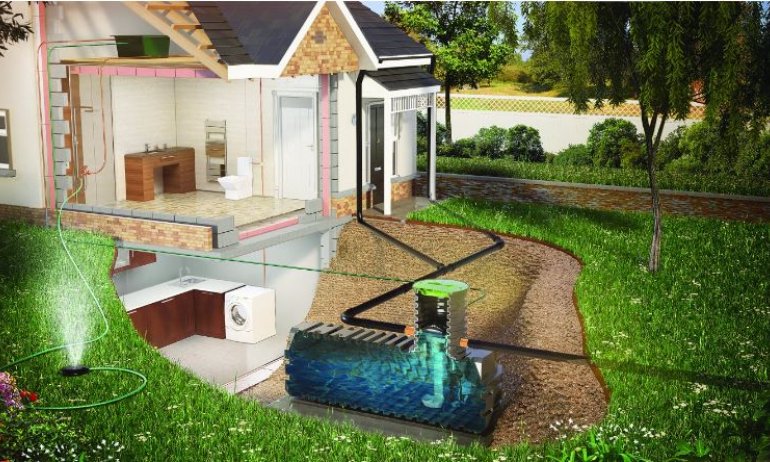
What is Rainwater Harvesting?
What is Rainwater Harvesting?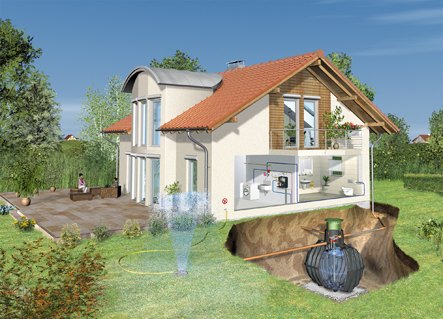
A Guide to Underground Tanks
A Guide to Underground Tanks
Frequently Asked Questions
Water Tanks
Water Tanks
What materials are the plastic tanks manufactured from?
Plastic water tanks can be made of lots of different materials, however the majority of tanks we offer are made from either a medium density polyethylene (MDPE) or a high density polyethylene (HDPE).
What’s a standard hose pipe size?
UK hose pipe diameters range from ½” to ¾” inch diameters. The majority of standard size garden hoses are 1/2” BSP, however we do offer accessories for the ½3/4” hose, if required.
What outlet do I require?
The majority of our water tanks come with an outlet as standard. We can offer a range of water tanks where the tanks can either ‘Drilled’ or ‘Undrilled’. ‘Drilled’ meaning allowing water to escape from the tank via the outlet, whereas ‘Undrilled’ is when the outlet will remain sealed, preventing liquid from coming out and ensuring the contents of the tank is only touching plastic.
If the position of the outlet is required in an alternative position to the standard one offered or extra to the one positioned, we can offer a plastic Fusion socket. This can be welded anywhere on the tank using a drawing supplied by us, positions marked out by you, then fitted by the manufacturer.
Plain tanks (with no outlets) can also be offered.
If you require a plastic fusion socket or a plain tank, then please contact our Customer Service Team, who will be happy to help with your requirements.
Tap or hose tail kits, what’s the difference and when would I need one?
We offer a range of tap kits, each displaying the size of the hosetail and the outlet size the kit will suit. Tap Kit 5 (TPK5) is the best solution if you require a garden hose to be fitted. Our range of Hosetail kits allows you to attach a hose or pipe to the tank, leak-free. They are designed for continuous flow and come in varying sizes depending on the outlet.
All our tap kits come with a Jubilee clip and PDFE tape for that secure fit.
Baffled Water tanks, what are they and when are they recommended?
Baffled water tanks are tanks with an intergral wall system, which is primarily designed to strengthen and support the structure of the tank, when the tank is full of water.
Due to the structure of the baffles they can also be used for transporting water. The Baffles distrupt the movement of water, from surging from one side to the other. However, if you are transporting water, water tanks can be extremely hazardous when transporting large volumes of water. Please make sure the water tanks are installed and secured correctly, by a suitable qualified person before transportation. Baffled water tanks are an ideal solutions for car valeters, window cleaners or anyone who has to transport liquids using plastic water storage tanks and containers.
What is the difference between Potable (wholesome water) and Non-Potable water tanks?
A potable water tank or 'Wholesome water tank' is suitable for storing drinking water and must adhere to specific government regulations. A non-potable water tank stores water that can be used for other purposes like flushing toilets and watering plants, but is not safe for human consumption.
All potable water tanks, like these GRP tanks, must be submitted to the WRAS for testing, approval and accreditation and be approved in line with the Water Supply (Water Fittings) Regulations 1999. Potable water tanks are usually constructed from food-grade polyethylene and finished with a smooth interior to protect against bacteria growth. Our potable water tanks come in a wide range of capacities, from 4 litres to 30,000 litres.
Non-potable tanks store water that can be used for plumbing purposes, such as flushing the toilet and in washing machines, as well as for gardening. They are often used in industrial and commercial premises, horticultural and market garden applications, agricultural irrigation and civil engineering situations where mains water is not available. In fact, non-potable water tanks are suitable for any application where the water or liquid stored will not be consumed by humans or animals.
What size Hot water tank do I need for 4 people?
The hot water tank size you’ll need for four people will depend entirely on your hot water usage habits. To get an accurate answer, you’ll need to calculate how much hot water your household of four would use during its busiest time. If you regularly use several hot water appliances at the same time each day, you’ll want to take that into consideration. But if you’ll rarely be using more than one hot water appliance at a time, a smaller tank would be adequate.
If you’re just looking for an estimate, a simple rule of thumb is to allow between 40 litres for each occupant in the house – so as a very rough guide, a household of four people may use around 160 litres of hot water. However, this should be used as a very general guide and may not accurately match your hot water needs.
What size hot water tank do I need for 2 people?
Getting the correct sized hot water tank is important. If your tank is too small for your needs, you will keep running out of water. If your tank is too large, you will waste money as your system will have to work harder to keep a larger amount of water hot – even though you’re not using it. It’s best to find a tank size that comfortably covers your needs, so you’re not left short, but also not paying for what you won’t use.
Although there may only be two of you using the hot water tank, you’ll want to think about your water usage habits. Do you like to take long showers? And do you have a large shower head that will increase the demand on your hot water system? If you regularly use your dishwasher or washing machine, this should also be taken into account.
For a very rough estimate, a simple rule of thumb is to allow between 40 litres for each occupant. This equates to approximately 80 litres for a two-person household. However, this should be used as a very rough guide and may not accurately match your hot water needs.
What type of water tank do I need?
At Tanks Direct, we stock a range of different water tanks. From rainwater harvesting to wastewater treatment, there are water tanks designed for all types of water storage. The type of water tank you need will depend on what you plan to use it for.
If you are storing drinking water, you will need a potable water tank, like these GRP tanks. They are suitable for storing clean water that is fit for human consumption, prepping food and cleaning dishes. They meet government approved standards and regulations for the safe storage of drinking water. Non-potable water tanks store water that can be used for other purposes like flushing toilets and watering plants, but is not safe for human consumption.
If you’re storing hazardous materials or liquids, check out our range of IBCs (Intermediate Bulk Containers) or if you’re working in the agricultural, farming or horticulture sector, you may want to have a look at our agricultural water tanks that are built to withstand the changeable outdoor environment. Our rainwater harvesting tanks are great for collecting and storing rainwater, that can then be used to flush your toilets and wash your clothes.
We have many more types of water tanks available at Tanks Direct. If you’d like any help and advice choosing your water tank, don’t hesitate to contact our friendly team.
How long should a water storage tank last?
There are many factors that can affect how long a water tank should last:
Usage
The purer the water you’re storing in your tank, the longer your tank is likely to last. For example, if you’re storing salt water, there is a much higher risk of corrosion and damage to the tank. Clean water is much less likely to damage your tank.
Materials
Most water tanks will be made from either plastic or metal. Plastic tanks are non-biodegradable, so it shouldn’t break down over time. For this reason, you should use a specialist waste disposal company at the end of your tank’s life. A good quality polymer plastic water tank should last between ten and twenty years. Metal water tanks are usually made from steel, which can be melted down and recycled at the end of its life. A steel tank should last over 30 years.
Location
Where your tank is located could also affect its lifespan. If your water tank is stood in water, it could damage it, so try to ensure your tank is placed on a solid foundation. The UV treatment on plastic tanks can also be reduced if exposed to long hours of direct sunlight.
How much does it cost to install a water storage tank?
Water tank installation and replacement costs can vary greatly based on several factors.
First, you’ll want to consider the cost of the tank itself. The bigger the tank, the bigger the price tag. The material the tank is made of will also impact the cost, with metal water tanks costing slightly more than plastic ones.
When it comes to the installation, underground water tanks generally cost more to install than above ground water tanks. Underground water tanks need an excavation crew to dig out the area where the tank will go, so you will need to factor in the cost of labour to do this. If you are installing a cold-water storage tank in an attic, the biggest challenge is getting the tank inside the loft through the loft hatch and removing the old tank. Ease and accessibility will play an enormous factor in the final cost.
Finally, you will need to consider the cost of a plumber to connect the pipes. If you’re wanting any additional add-ons for your water tank, such as booster pumps to increase the water pressure, there may be additional costs to consider.
We recommend consulting your local council and homeowners' association to ensure that your water tank installation meets all the required guidelines.
How heavy do I need my marquee weight to be?
Choosing the right weight for your marquee is crucial for ensuring its stability and safety, especially in windy conditions. There are several factors to consider determining the ideal weight for your specific situation. The first is the size and type of marquee you are using. A larger marquee naturally requires more weight to hold it down effectively. Additionally, different marquee styles have varying wind resistance. Pop-up gazebos typically have a smaller footprint and lower profile, requiring less weight compared to a spacious marquee with high walls and a peaked roof. The weight required may vary depending on the surface the marquee is placed on too. A hard, stable surface like concrete requires less weight compared to softer ground like grass or sand. Soft ground offers less resistance to wind, so additional weight is necessary to compensate and prevent the marquee from being lifted or shifted. If you're setting up your marquee in a calm and sheltered location, the weight requirements can be slightly relaxed. However, if you anticipate wind gusts or if your location is prone to strong winds, you'll need to factor in a higher weight capacity to ensure the marquee remains secure and doesn't pose any safety risks.
What’s a potable / wholesome water tank?
Water tanks can be classified as ‘potable’ or 'Wholesome water' and ‘non potable’. If you are storing clean water for human consumption, whether it be for drinking, prepping food or cleaning dishes etc, then a potable water tank is what you are after. All potable (wholesome water) tanks must conform to the WRAS (Water Regulations Advisory Scheme) so that the liquid is safe for human consumption.
Non-potable tanks are for the safe storage of non-drinking water or for ‘not suitable’ for human consumption, in many different environments and applications. Non-potable tanks can be used in applications like rainwater harvesting, irrigation, agriculture & horticulture and commercial purposes where mains water is not available.
The difference in classification between the two comes from the materials used during the manufacturing process, specifically the type of plastic used to line the inside of the tank which comes into contact with the contained water. Non potable tanks are more porous, making it easier for the bacteria to grow and can sometimes let off gases which can contaminate the water. The WRAS approved material lines the inside of the tank, making the tank fit for human consumption, either ingested or used on the skin.

 Login
Login